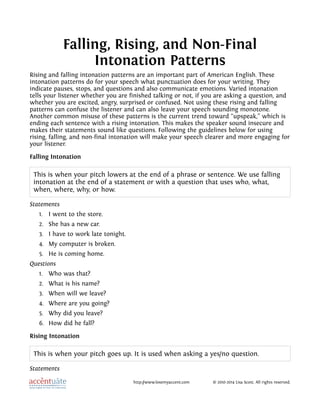This document discusses rising and falling intonation patterns in American English and how they are used to indicate pauses, questions, emotions and whether a speaker is finished talking. It notes that varied intonation makes speech clearer and more engaging for listeners, while a lack of these patterns or overuse of "upspeak" can confuse listeners or make the speaker sound insecure. The document then provides examples of statements and questions using falling intonation, yes/no questions using rising intonation, and the use of non-final intonation within sentences for unfinished thoughts, introductions, lists and choices.



